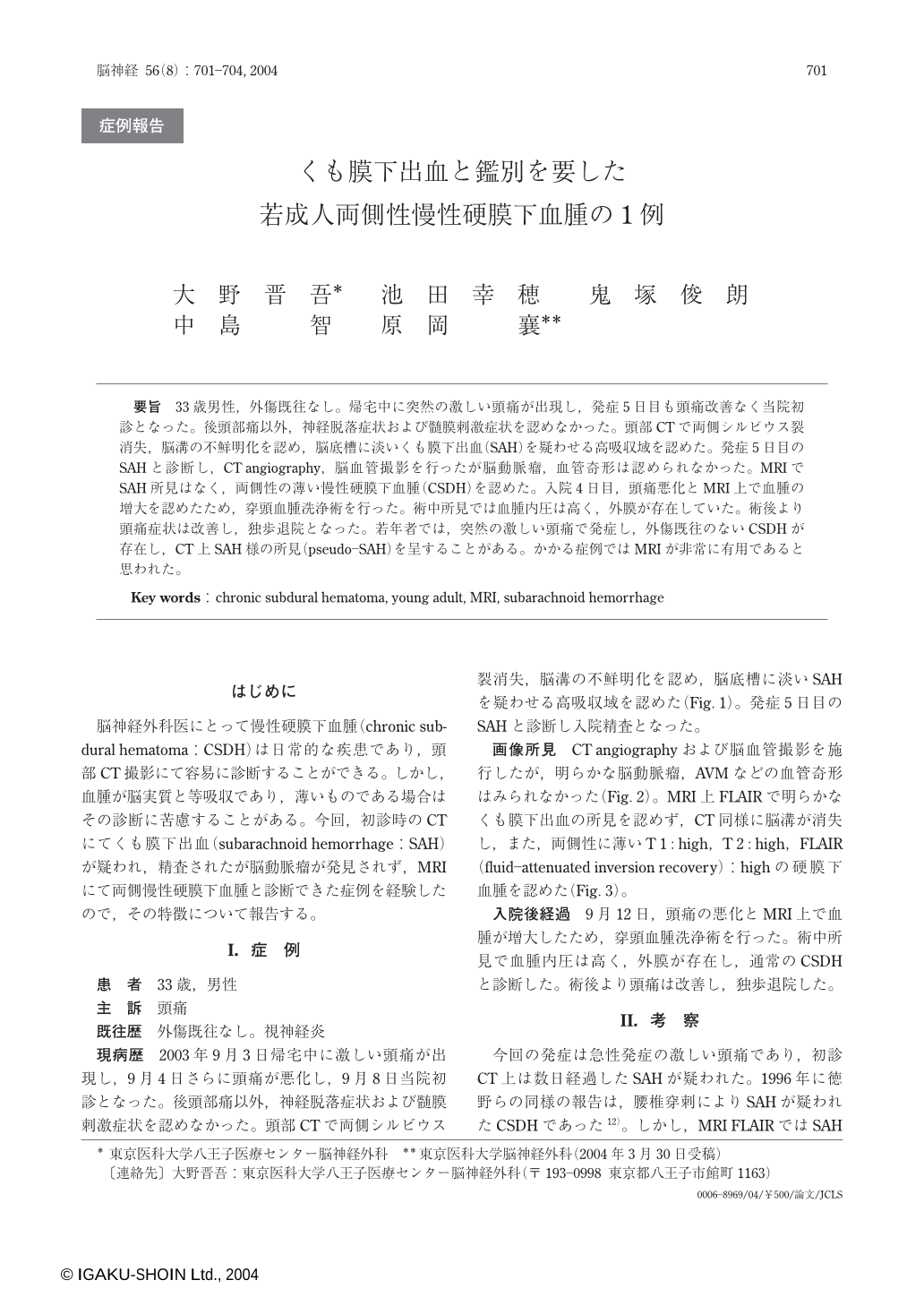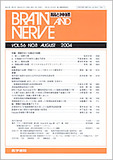Japanese
English
- 有料閲覧
- Abstract 文献概要
- 1ページ目 Look Inside
要旨 33歳男性,外傷既往なし。帰宅中に突然の激しい頭痛が出現し,発症5日目も頭痛改善なく当院初診となった。後頭部痛以外,神経脱落症状および髄膜刺激症状を認めなかった。頭部CTで両側シルビウス裂消失,脳溝の不鮮明化を認め,脳底槽に淡いくも膜下出血(SAH)を疑わせる高吸収域を認めた。発症5日目のSAHと診断し,CT angiography,脳血管撮影を行ったが脳動脈瘤,血管奇形は認められなかった。MRIでSAH所見はなく,両側性の薄い慢性硬膜下血腫(CSDH)を認めた。入院4日目,頭痛悪化とMRI上で血腫の増大を認めたため,穿頭血腫洗浄術を行った。術中所見では血腫内圧は高く,外膜が存在していた。術後より頭痛症状は改善し,独歩退院となった。若年者では,突然の激しい頭痛で発症し,外傷既往のないCSDHが存在し,CT上SAH様の所見(pseudo-SAH)を呈することがある。かかる症例ではMRIが非常に有用であると思われた。
A 33-year-old man was admitted to our hospital with a sudden severe headache five days after the onset. CT scan showed a slight high-density area in the basal cistern, mimicking subarachnoid hemorrhage(SAH), and diffuse brain swelling. However, conventional cerebral angiography and CT angiography failed to demonstrate aneurysms and vascular malformations. MRI showed bilateral subdural hematoma, but no SAH. Irrigation of liquefied subdural hematoma, causing high intracranial pressure, was carried out. Postoperative course was uneventful and his headache resolved within a day. The author presented a case of bilateral chronic subdural hematoma who presented with a sudden severe headache mimicking a SAH. Hyper attenuation in the basal cistern and subarachnoid space in CT, don't always indicate SAH. MRI, including fluid-attenuated inversion recovery(FLAIR) sequences, is useful in differentiating the “pseudo” SAH from “true” SAH, and lead to the right diagnosis.
(Received : March 30, 2004)

Copyright © 2004, Igaku-Shoin Ltd. All rights reserved.


